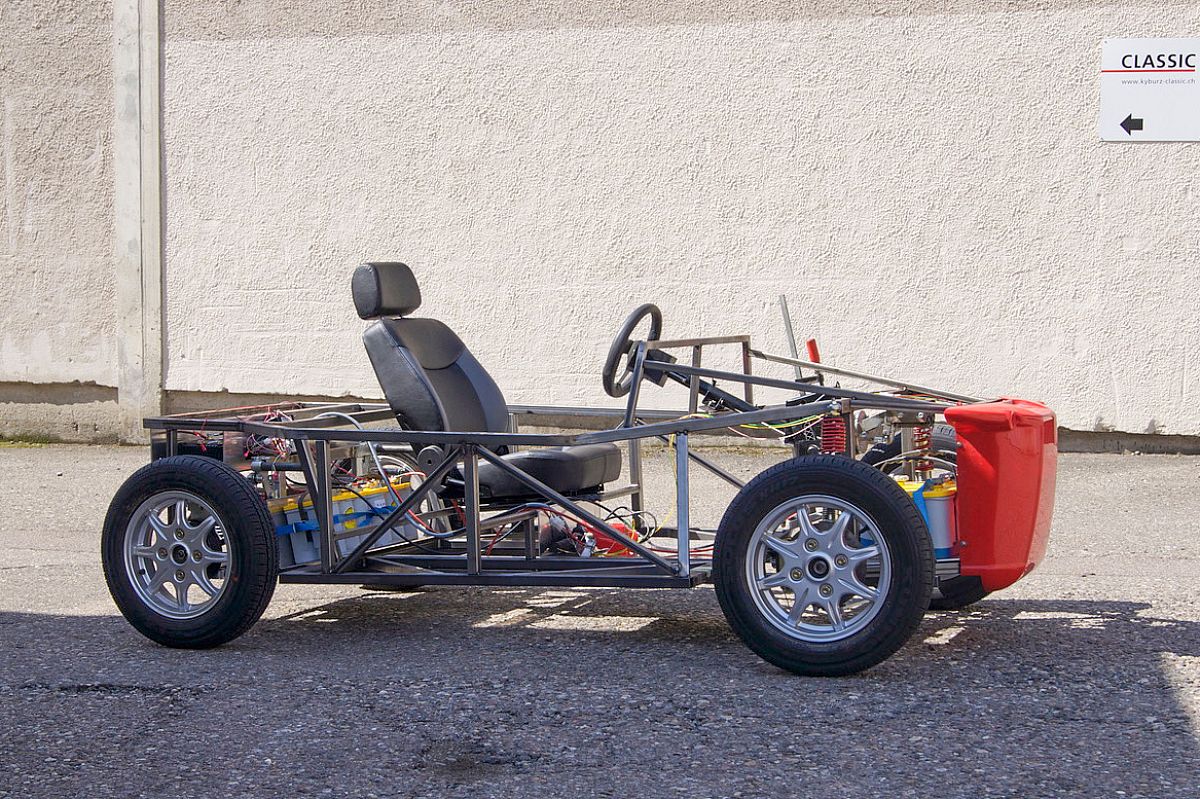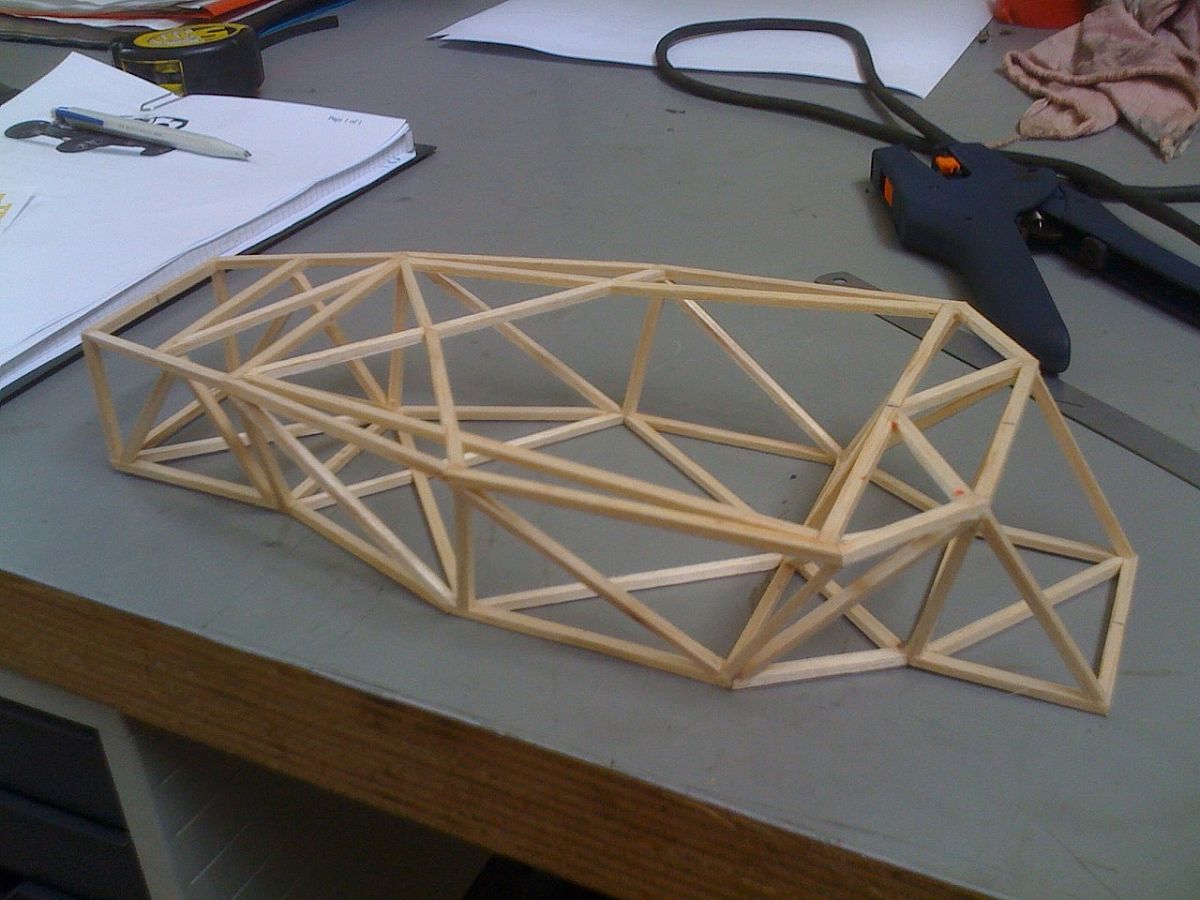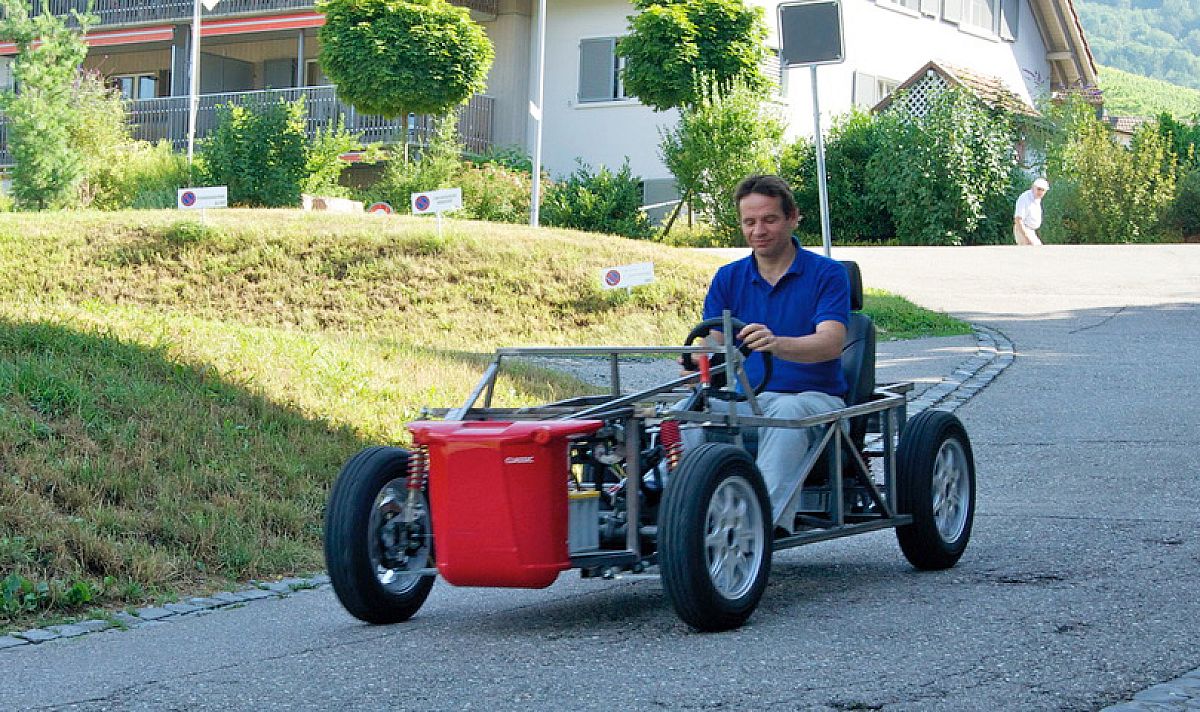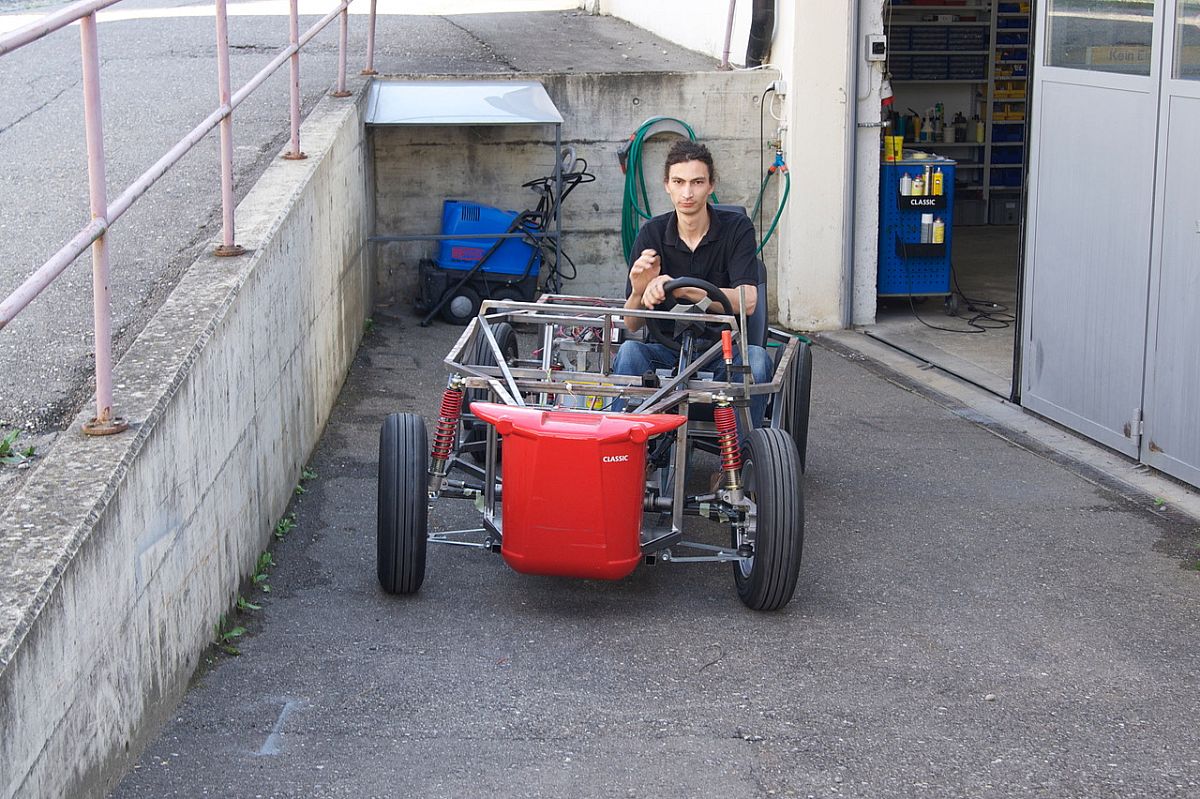Development of the eRod

My very first vehicle was a wine-red scooter that I had received as a gift from my parents. The vehicle was old and had many signs of use, but I still loved it and rode around our neighbourhood for hours. The neighbours also got scooters and so we formed our scooter gang. Of course, the idea was to make the scooters faster. Lubricating the ball bearings was the first step. After that, I started to dismantle all the unnecessary parts. Luggage racks - not needed, bells, superfluous. Protective cover - overrated and it obscures the direct view of the turning wheels. Front brake - never worked anyway. Rear brake - my parents had a serious word with me and I had to mount it again immediately before I was allowed out to my scooter gang.
Many years later, a co-worker proudly showed me his newly acquired car: an Audi A8, no: to be precise an Audi S8. This is the high power version with a 250 kW 8-cylinder petrol engine, ceramic brakes, lowered, finest leather interior, yes: even champagne cooler and rear window blinds were present. When he told me the purchase price, I had to sit down: He had been able to buy the vehicle, which had cost over CHF 250,000 just a few years ago, for barely CHF 6,000. For me, it was the epitome of the consumption of technology. Many hundreds of engineers put all their expertise into a product that was sold for a lot of money and then after a few years it is simply traded for a few francs. My employee knew exactly what he had acquired. But all this wonderful technology had obviously been traded well below its value. Or was it? In the meantime, I consider a petrol drive to be obsolete. The consumption was well over 12 L per 100 km and the maintenance costs were enormous. Surely that could not be? A thought has matured in my mind: "Reduce to the max" - but please with contemporary technology. What does it take? I remembered my pedal scooter and began in my mind to leave out everything that was not needed. What was left? A tubular frame as the central element. Suspension, brakes, a modern drive, charger and good seats. That's all it needs. That was exactly the specification I had written. eRod was the name of the new design. A combination of "electric" and "HotRod" in the style of the self-built cars of the 1930s.
I told my idea to a co-worker who was on fire and immediately started working on the vehicle in his spare time. The first thing we needed was a rough construction drawing and then an assembled "seat box". The seat box is used to estimate the dimensions, check the ergonomics and the assembly of all components. Over the next few weekends, the frame was built. I wanted the seat box to be drivable right away, so we gave the frame steering from our PLUS and the drive from the DXP, which we tuned to the maximum possible power. Brakes were also installed, but unfortunately only on the front axle. Yes: that had to be enough.
With this seat box we drove around. We reached a maximum speed of 60km/h and had a lot of fun. The concept seemed to work.

The employee lost interest in the project. It remained in storage and blocked our valuable space. That's when I met a young lecturer from the Bern University of Applied Sciences. Young, wild, pragmatic, polarising, challenging - we got along excellently right away. There were students who appreciated him and his challenging manner. But there were also those who were a little less keen to attend his design lessons and there was a reason for that: if a student had found a solution to solve a problem, he demanded a second solution. If the student had worked out this second solution with effort and hardship, he demanded 6 (!) more solutions and a comparison of them. This teacher, Sebastian Tobler, visited me and told me about the glorious past of the Bern University of Applied Sciences. There were tyre-testing-mobiles, innovative projects in active and passive safety, the "Spirit of Biel", with which a previous team had driven a race across Australia and won, and now he was at the school as a young lecturer and wanted to make a difference. Unfortunately, he had no budget for it... That could be changed: I took him to the eRod's mobile seat box, took him for a spin and told him: He could take over this project. I would give him all the existing drawings, this seat box and equip him with material to build a prototype. He could turn it into a "Bern University of Applied Sciences project" with his students. But I expect that in the end a road-legal vehicle will be built with which he can pick up his guests at the station in Biel in the future - in all weathers, mind you. Sebastian was beaming! This was exactly the kind of project he wanted. He immediately began to advertise term papers for his students and this project was also to be the focus of the design week with a renowned designer. I parted with the eRod very easily. I knew it was in good hands. A short time later, the functional model was transported to Vauffelin, to the DTC. There it did not stand up to the critical eye of the director Bernhard Gerster. He forbade the students to drive it. The braking system we had installed seemed too adventurous. Instead, it was dismantled and the students measured the vehicle and created new, updated drawings. The eRod project had gained momentum.

But just at that moment, bad news reached me: the lecturer Sebastian Tobler had had a serious accident. A jump he had attempted with his bicycle failed and he was paraplegic. He was immediately transported to Nottwil for rehabilitation. And now? The students were there, the projects had started. Who was going to supervise them?

I learned from it:
- For every high there is a low.
- The most beautiful plan is wastepaper if the leader of the project fails.
- Somehow it goes on, always.
